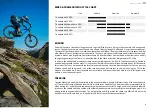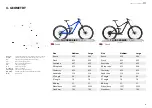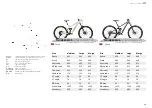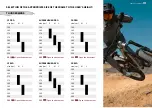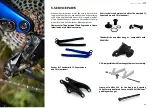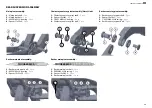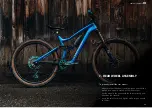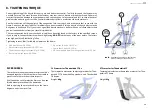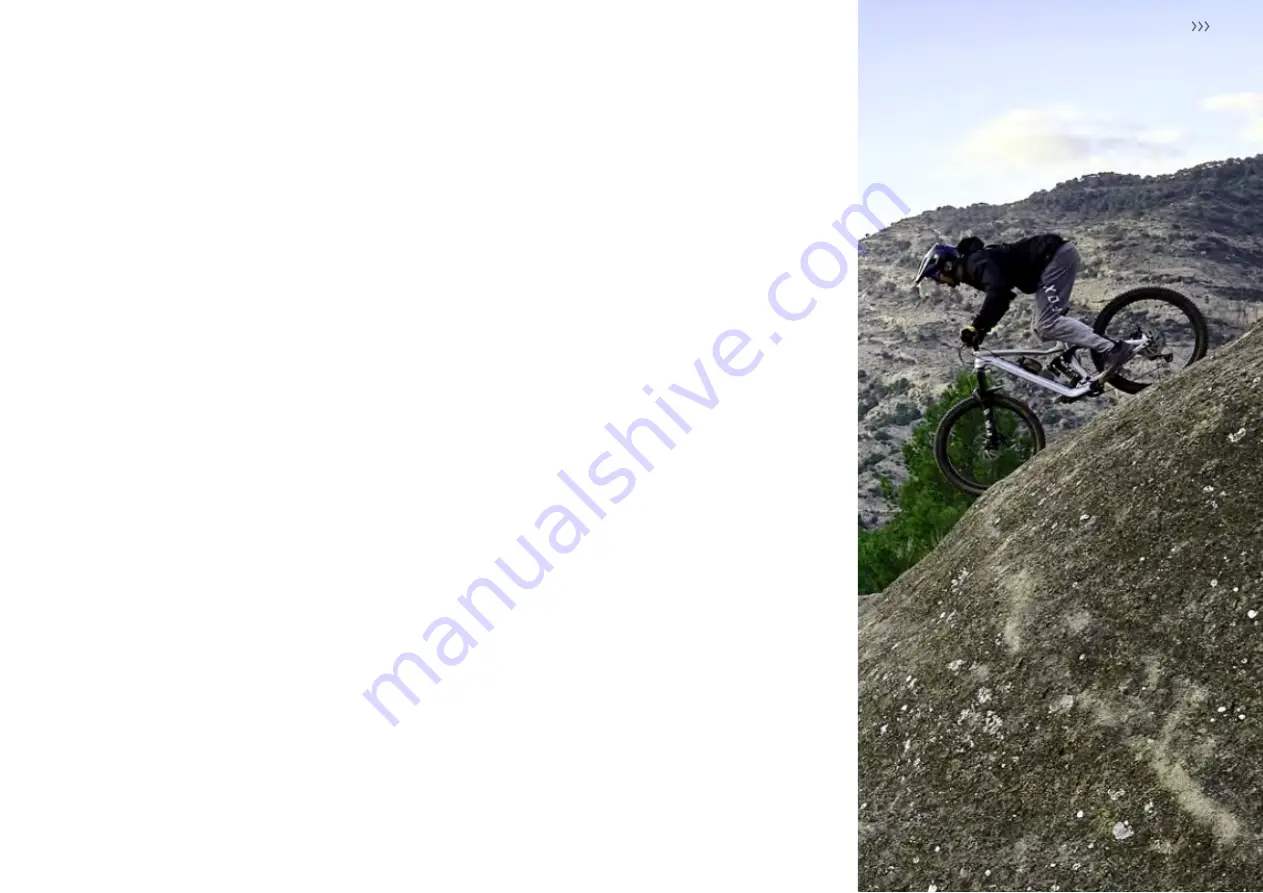
20
Do not ride the bike if any defect is noticed.
It is recommended that the user take care of the
frame of his bike, which will allow him to enjoy it for
a longer period. Before each ride, the bicycle should
always be inspected, which should include the fol
-
lowing points:
• clean the frame - remember that high-pressure
washing may damage some parts of the bike, so
avoid it,
•
carefully
inspect for signs of potential failure in-
cluding cracks, corrosion, dents, paint peeling, and
any other signs of potential problems and misuse.
•
If you find anything suspicious, contact your local
bicycle dealer for a proper checkup. These are very
important safety checks to prevent accidents, inju
-
ries and shorten the life of the product.
Points/things to check before each ride:
• That all frame bolts are properly tightened - see
• Connecting the wheels to the frame and fork - is
crucial for the user’s safety.
• If axles are bolted, they must be properly tightened
to the manufacturer’s specifications.
• If there is a quick releaser, ensure that it is in the
CLOSED position with the appropriate resistance level.
• The steering system includes handlebars, stems,
headsets, and a fork. All elements should be prop
-
erly twisted to ensure safety while riding. If the
user wants to make any changes, be careful as
incorrect settings can be very dangerous. It is a
ways best to seek professional advice in this re-
gard. Check that there is play in the rudders, the
connection of the stem to the handlebars and
the connection of the stem to the steerer tube,
the connection between the handlebars and
the stem, try to lift the handlebars up and down
-there should be no movement between the two.
Check that there is no additional slack in the controls
(stand next to the bike, tighten the front brake and
push the bike back and forth. There should be no play
between the frame, and the fork). If there is any play,
contact your local bike shop. Do not make any adjust
-
ments yourself, unless you are sure of your abilities.
Adjust the steering according to the instructions from
the manufacturer of the headset. All parts of the ster
-
num should be regularly checked for damage or cracks.
If a user finds anything suspicious, they should immediate
-
ly contact an experienced bicycle mechanic. A damaged
steering system can cause serious injury or even death.
• Connecting the bottom bracket to the frame. There
should be no play between the frame and the carriage.
• The connection between cranks and the bottom bracket.
• Connecting the pedals to the cranks.
Points/things to check before each ride:
• Linkage of the derailleur to the frame - make sure that it
functions properly before each ride.
•
Attach the brake caliper to the frame and fork.
• The general condition of the front and rear shock (pay
particular attention to any cracks, or deformation).
•
Air Shock pressure (in the case of air forks). See
and manufacturer’s manual. Make sure the
SAG does not exceed a reasonable limit. Make sure the air
pressure does not exceed the limits provided by the damp-
er / fork manufacturer.
• Clean the tubes of the rear shock and fork.
• Brake cables and their housing for kinks, rust, broken
bands, or frayed ends. If any damage is noticed, the ca-
bles should be replaced immediately. Damaged cables
can seriously affect braking performance.
•
Be sure to follow the manufacturer’s instructions for ser
-
vicing the shock absorber and other parts. Instructions
for the use of additional parts are provided in the box.
10. MAINTENANCE & SAFETY CONTROLS



